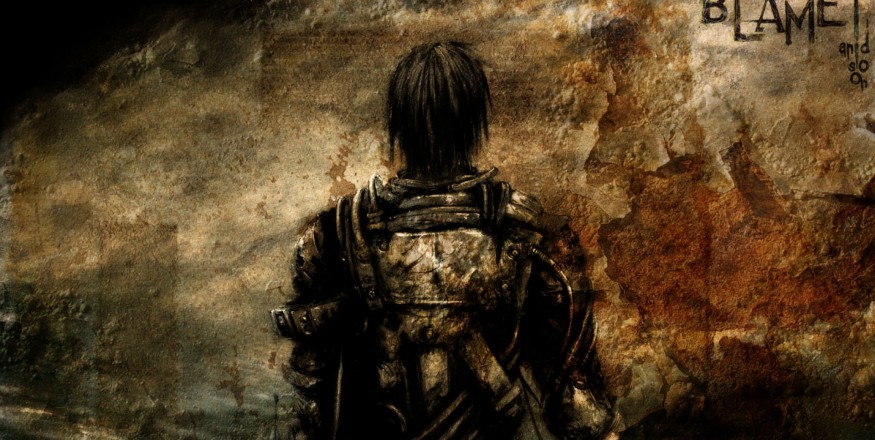The Lesser Key of Solomon, also known as Clavicula Salomonis Regis or Lemegeton, is an anonymous grimoire (or spell book) on demonology. It was compiled in the mid-17th century, mostly from materials a couple of centuries older. It is divided into five books—the Ars Goetia, Ars Theurgia-Goetia, Ars Paulina, Ars Almadel, and Ars Notoria.974Please respect copyright.PENANA5jYjSgWEH1
Ars Goetia974Please respect copyright.PENANAJYQli1JlkZ
The most obvious source for the Ars Goetia is Johann Weyer's Pseudomonarchia Daemonum in his De praestigiis daemonum. Weyer does not cite, and is unaware of, any other books in the Lemegeton, indicating that the Lemegeton was derived from his work, not the other way around. The order of the spirits was changed between the two, four additional spirits were added to the later work, and one spirit (Pruflas) was omitted. The omission of Pruflas, a mistake that also occurs in an edition of Pseudomonarchia Daemonum cited in Reginald Scot's The Discoverie of Witchcraft, indicates that the Ars Goetia could not have been compiled before 1570. Indeed, it appears that the Ars Goetia is more dependent upon Scot's translation of Weyer than Weyer's work in itself. Additionally, some material was used from Heinrich Cornelius Agrippa's Three Books of Occult Philosophy, the Heptameron by pseudo-Pietro d'Abano, and the Magical Calendar.
Weyer's Officium Spirituum, which is likely related to a 1583 manuscript titled The Office of Spirits, appears to have ultimately been an elaboration on a 15th-century manuscript titled Le Livre des Esperitz (of which 30 of its 47 spirits are nearly identical to spirits in the Ars Goetia).
In a slightly later copy made by Thomas Rudd, this portion was labelled "Liber Malorum Spirituum seu Goetia", and the seals and demons were paired with those of the 72 angels of the Shemhamphorasch, who were intended to protect the conjurer and control the demons he summoned. The angelic names and seals were derived from a manuscript by Blaise de Vigenère, whose papers were also used by Samuel Liddell MacGregor Mathers in his works for the Hermetic Order of the Golden Dawn. Rudd may have derived his copy of Liber Malorum Spirituum from a now-lost work by Johannes Trithemius, who taught Agrippa, who in turn taught Weyer.
This portion of the work was later translated by S. L. MacGregor Mathers and published by Aleister Crowley under the title The Book of the Goetia of Solomon the King. Crowley added some additional invocations previously unrelated to the original work, as well as essays describing the rituals as psychological exploration instead of demon summoning.974Please respect copyright.PENANA5PPl1BjFAq
The Seventy-Two Demons
The demons' names (given below) are taken from the Ars Goetia, which differs in terms of number and ranking from the Pseudomonarchia Daemonum of Weyer. As a result of multiple translations, there are multiple spellings for some of the names, which are given in the articles concerning them.
1) King Bael974Please respect copyright.PENANAVCXbn7L77Y
2) Duke Agares974Please respect copyright.PENANAH5Oj3Hikyf
3) Prince Vassago974Please respect copyright.PENANAYFmOO5Woke
4) Marquis Samigina974Please respect copyright.PENANAs5ysnyuxwC
5) President Marbas974Please respect copyright.PENANAEfrUSG49uf
6) Duke Valefor974Please respect copyright.PENANAVMDuZhlwjN
7) Marquis Amon974Please respect copyright.PENANAvtFQOkPBHF
8) Duke Barbatos974Please respect copyright.PENANAbF5zDEQ550
9) King Paimon974Please respect copyright.PENANAQoWk9BpPzC
10) President Buer974Please respect copyright.PENANAZF9OaFAuV6
11) Duke Gusion974Please respect copyright.PENANAdQkypOEV0Z
12) Prince Sitri974Please respect copyright.PENANAl47RVNeroO
13) King Beleth974Please respect copyright.PENANApkiTtKlG8t
14) Marquis Leraje974Please respect copyright.PENANAzYj9qXhYjg
15) Duke Eligos974Please respect copyright.PENANA6EJqZdPRCT
16) Duke Zepar974Please respect copyright.PENANAvu8BKsFMFW
17) Count/President Botis974Please respect copyright.PENANAIeswqs2lKC
18) Duke Bathin974Please respect copyright.PENANAteCYaV3EMT
19) Duke Sallos974Please respect copyright.PENANAouc3ntFzXN
20) King Purson974Please respect copyright.PENANA8X7uppS98p
21) Count/President Marax974Please respect copyright.PENANA8mzMvcScqG
22) Count/Prince Ipos974Please respect copyright.PENANA1nmbXgPvGM
23) Duke Aim974Please respect copyright.PENANA5xluppOeeg
24) Marquis Naberius974Please respect copyright.PENANA7uICnxQimy
25) Count/President Glasya-Labolas974Please respect copyright.PENANAhbrmFbPbmf
26) Duke Buné974Please respect copyright.PENANAYLBjRTDhml
27) Marquis/Count Ronové974Please respect copyright.PENANAZDUCLCjvkQ
28) Duke Berith974Please respect copyright.PENANAM1SUA7MnyF
29) Duke Astaroth974Please respect copyright.PENANAjfdptI00AA
30) Marquis Forneus974Please respect copyright.PENANAV8xmRhxcLA
31) President Foras974Please respect copyright.PENANAsw5F54O9fP
32) King Asmoday974Please respect copyright.PENANA8vNt7y0KKC
33) Prince/President Gäap974Please respect copyright.PENANAGwCI8BP6r0
34) Count Furfur974Please respect copyright.PENANA4pZIF8f9Nt
35) Marquis Marchosias974Please respect copyright.PENANAVvs6RpMi7p
36) Prince Stolas974Please respect copyright.PENANAHUtsnFR2Bm
37) Marquis Phenex974Please respect copyright.PENANAEboNkI5X1g
38) Count Halphas974Please respect copyright.PENANAcgbtPaKFKX
39) President Malphas974Please respect copyright.PENANAZYAxE0akMc
40) Count Räum974Please respect copyright.PENANAkf9RfWYt61
41) Duke Focalor974Please respect copyright.PENANAWPU2kNDRJC
42) Duke Vepar974Please respect copyright.PENANAsnNqy3XmYJ
43) Marquis Sabnock974Please respect copyright.PENANArlsxkLStPH
44) Marquis Shax974Please respect copyright.PENANAJEcdn4Acm7
45) King/Count Viné974Please respect copyright.PENANAb6jAkZTDYR
46) Count Bifrons974Please respect copyright.PENANATH2c7yHrIE
47) Duke Vual974Please respect copyright.PENANAO8wJCNVdd7
48) President Haagenti974Please respect copyright.PENANApCEKVQyQpk
49) Duke Crocell974Please respect copyright.PENANAaG5JLviVr3
50) Knight Furcas974Please respect copyright.PENANAebGNwelWFN
51) King Balam974Please respect copyright.PENANAtARtmtUp6J
52) Duke Alloces974Please respect copyright.PENANAlb4E86Zi5N
53) President Caim974Please respect copyright.PENANACVRIhgODoC
54) Duke/Count Murmur974Please respect copyright.PENANAlwMbbRgtAs
55) Prince Orobas974Please respect copyright.PENANANVx4960nmZ
56) Duke Gremory974Please respect copyright.PENANA7Y4I58NPbu
57) President Ose974Please respect copyright.PENANAGin1cpdA22
58) President Amy974Please respect copyright.PENANAEGPfxjcc77
59) Marquis Orias974Please respect copyright.PENANAescnsV3Zej
60) Duke Vapula974Please respect copyright.PENANAh5RBqNIrM7
61) King/President Zagan974Please respect copyright.PENANAYOa6am7yhl
62) President Valac974Please respect copyright.PENANA8DaDaavjvq
63) Marquis Andras974Please respect copyright.PENANAdF6BetiSvZ
64) Duke Flauros974Please respect copyright.PENANA8snyqh8A80
65) Marquis Andrealphus974Please respect copyright.PENANAvMJZEYZTJS
66) Marquis Kimaris974Please respect copyright.PENANAFdUvIiAFTx
67) Duke Amdusias974Please respect copyright.PENANAxBKAbiu6Fh
68) King Belial974Please respect copyright.PENANAm3Ss7d6J6Z
69) Marquis Decarabia974Please respect copyright.PENANABaZbVD2rAU
70) Prince Seere974Please respect copyright.PENANAeQzo9FW5nC
71) Duke Dantalion974Please respect copyright.PENANAcVZTbIhedv
72) Count Andromalius
The demons are described as being commanded by four kings of the cardinal directions: Amaymon (East), Corson (West), Ziminiar (North), and Gaap (South). A footnote in one variant edition instead lists them as Oriens or Uriens, Paymon or Paymonia, Ariton or Egyn, and Amaymon or Amaimon, alternatively known as Samael, Azazel, Azael, and Mahazael (purportedly their preferred rabbinic names).[10] Agrippa's Occult Philosophy lists the kings of the cardinal directions as Urieus (East), Amaymon (South), Paymon (West), and Egin (North); again providing the alternate names Samuel (i.e. Samael), Azazel, Azael, and Mahazuel. The Magical Calendar lists them as Bael, Moymon, Poymon, and Egin, though Peterson notes that some variant editions instead list '"Asmodel in the East, Amaymon in the South, Paymon in the West, and Aegym in the North"; "Oriens, Paymon, Egyn, and Amaymon"; or "Amodeo [sic] (king of the East), Paymon (king of the West), Egion (king of the North), and Maimon."974Please respect copyright.PENANAlEo8FQsW8D
Ars Theurgia Goetia974Please respect copyright.PENANAxeA9rTz5Fu
The Ars Theurgia Goetia mostly derives from Trithemius's Steganographia, though the seals and order for the spirits are different due to corrupted transmission via manuscript. Rituals not found in Steganographia were added, in some ways conflicting with similar rituals found in the Ars Goetia and Ars Paulina. Most of the spirits summoned are tied to points on a compass, four Emperors tied to the cardinal points (Carnesiel in the East, Amenadiel in the West, Demoriel in the North and Caspiel in the South), sixteen Dukes tied to cardinal points, inter-cardinal points, additional directions between those. There are an additional eleven Wandering Princes, totaling thirty one spirit leaders who each rule several to a few dozen spirits.974Please respect copyright.PENANAnRii48toQL
974Please respect copyright.PENANAvcOfwMMhHt
Ars Paulina974Please respect copyright.PENANA8gIf7Xs4ix
Derived from book two of Trithemius's Steganographia and from portions of the Heptameron, but purportedly delivered by Paul the Apostle instead of (as claimed by Trithemius) Raziel. Elements from The Magical Calendar, astrological seals by Robert Turner's 1656 translation of Paracelsus's Archidoxes of Magic, and repeated mentions of guns and the year 1641 indicate that this portion was written in the later half of the seventeenth century. Traditions of Paul communicating with heavenly powers are almost as old as Christianity itself, as seen in some interpretations of 2 Corinthians 12:2-4 and the apocryphal Apocalypse of Paul. The Ars Paulina is in turn divided into two books, the first detailing twenty-four angels aligned with the twenty-four hours of the day, the second (derived more from the Heptameron) detailing the 360 spirits of the degrees of the zodiac.974Please respect copyright.PENANApBZh158kPh
Ars Almadel974Please respect copyright.PENANAxw0vJhNoDY
Mentioned by Trithemius and Weyer, the latter of whom claimed an Arabic origin for the work. A 15th-century copy is attested to by Robert Turner, and Hebrew copies were discovered in the 20th century. The Ars Almadel instructs the magician on how to create a wax tablet with specific designs intended to contact angels via scrying.974Please respect copyright.PENANA8sS3qBSWRL
Ars Notoria974Please respect copyright.PENANAltCdrzdqUr
The oldest known portion of the Lemegeton, the Ars Notoria (or Notory Art) was first mentioned by Michael Scot in 1236 (and thus was written earlier). The Ars Notoria contains a series of prayers (related to those in The Sworn Book of Honorius) intended to grant eidetic memory and instantaneous learning to the magician. Some copies and editions of the Lemegeton omit this work entirely; A. E. Waite ignores it completely when describing the Lemegeton. It is also known as the Ars Nova.974Please respect copyright.PENANAFTvSZcxNo9
974Please respect copyright.PENANA6PF8fFlJDp
It has also been said to be the origin of Pandora's box and where the seven deadly sins were born.
1 Gula (gluttony)974Please respect copyright.PENANARhPAIgx9a0
2 Luxuria (lust, fornication)974Please respect copyright.PENANABvnNACJuKo
3 Avaritia (avarice/greed)974Please respect copyright.PENANAsPN7P5gpSO
4 Superbia (pride, hubris)974Please respect copyright.PENANA7uDzPW5FVK
5 Invidia (Envy)974Please respect copyright.PENANAg1B6rJDr8p
6 Ira (wrath)974Please respect copyright.PENANAB0oTo4zYDn
7 Acedia (sloth)974Please respect copyright.PENANA3hWSw5tC4L
If you look any further into it, beware your surrounding... You will uncover, the truth.
ns 15.158.61.41da2





















